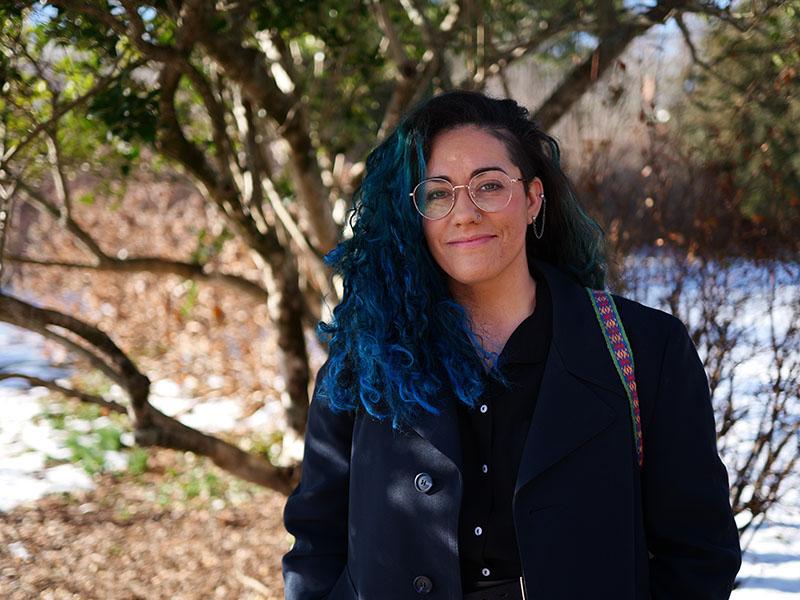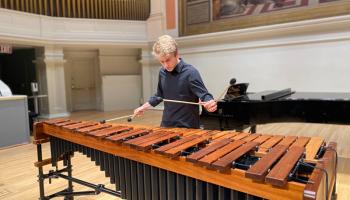UVA Music Student Is Building Bridges Between Art and Nature

Gabrielle Cerberville, a second-year University of Virginia doctoral student in the Department of Music, is making waves at the intersection of art and environmental advocacy … sound waves to be specific.
Blending art and science, Cerberville is pursuing her Ph.D. in music composition and computer technologies; her work explores the connections between human creativity and the natural world, seizing opportunities for discovery available only through interdisciplinary study.
Born in Sleepy Hollow, New York, and raised in the Poconos, Cerberville was enchanted by the worlds of music and nature at an early age.
“I grew up in the mountains, homeschooled with not a lot of friends around. When you’re a feral child who doesn’t wear shoes, you go outside, and the outside teaches you things,” she recalls.
Cerberville’s research focuses on the intersection of art, science and our responsibility to understand and protect the natural world.
“What attracted me to this program is its diversity. I have colleagues doing wonderful work in various contexts, from virtuosity and disability to hip-hop. My own interest lies in making science more accessible and present for the average person by using art,” she says.
From Composer to Chaotic Forager
Apart from her academic pursuits, Cerberville is a celebrated figure in the realms of mycology (the study of fungi) and foraging. Known online as the “Chaotic Forager” and sometimes as the “Internet’s Mushroom Auntie,” Cerberville has nearly two million followers across social media platforms. Her high-energy, informative and often humorous content has made her a popular educator on topics such as sustainability, edible wild plants and fungi and environmental activism.
As an amateur mycologist, Cerberville is passionate about the study of fungi.
“Mushrooms aren’t plants. They’re actually much closer to humans physiologically and evolutionarily speaking than they are to plants. In mycology, there’s a lot we’re just starting to learn,” she said.
She also highlights the importance of studying macrofungi — larger fungi distinguished by their spore-bearing fruit bodies — which she feels are woefully understudied.
“Amateurs like me are driving new research in this area,” she adds.
As a composer, Cerberville’s work has been featured across the United States and Europe, and she has been honored with residencies with arts and advocacy organizations in Ohio, Michigan, Indiana and New York and as far away as Iceland. The experiences have allowed her to combine her interest in the human and natural worlds, a theme central to her work.
Her project, “Fungal Chapel,” was the capstone for her master’s degree and involved the sonification of living mushrooms, exploring the potential for interaction between humans and nature.
“I like changing the idea of where the audience is and breaking down the dynamics between the audience, performer and composer,” Cerberville says. “What I’m hoping to do is expand the idea of what we think of as composition and who can compose, even envisioning how something non-human might compose.”
Cerberville’s unique approach to blending art and science has continued to attract audiences and supporters. She has participated in several music festivals, including the Ammerman Symposium at Connecticut College and the Missouri Experimental Sonic Arts Festival, where her work has been met with critical acclaim. Her compositions, described as both striking and welcoming, have been performed by dozens of artists and ensembles.
As she continues her doctoral studies at UVA, Cerberville remains committed to her mission of using art to inspire a deeper understanding and appreciation of the natural world.
“I want to create work that not only entertains but also educates and inspires,” she says. “By bridging the gap between art and science, I hope to make a positive impact on the world around us.”







